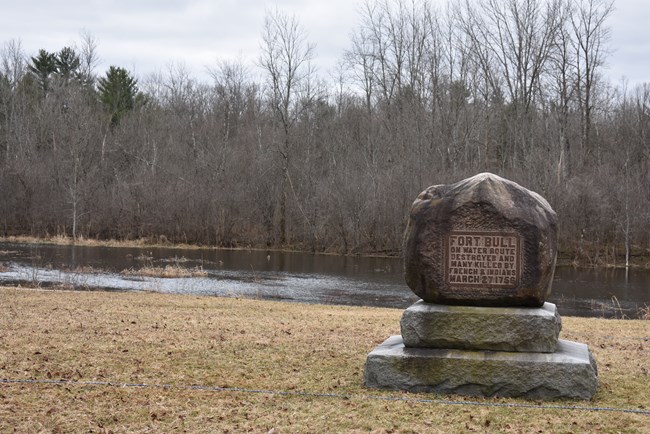Part of a series of articles titled 2022 Preservation Planning Grants Highlights.
Article
New York – Battle of Fort Bull: Research, Indigenous Voices, and Community Stewardship

The Public Archeology Facility, State University of New York, Binghamton
Recipient: State University of New York, Binghamton
Amount: $71,630
During the Seven Years’ (French and Indian War) in the spring of 1756, under the cover of dense forest, a French raiding party and their Wyandot allies, led by Lieutenant de Léry, inched silently towards the British garrison at Fort Bull, New York. Located along the Oneida Carry near the present-day town of Rome, the British military outpost at Fort Bull guarded strategically important trade routes linking the Atlantic Ocean and the borderlands at the intersection of Indian Country, British North America, and French Canada. The Wyandot wished to halt Britain’s colonial expansion into their lands. Their French allies attempted to challenge Britain’s dominance of the region and prevent attacks on French strongholds on Lake Ontario.
After stopping mere yards from the outpost’s palisade, de Léry gave the signal for the allied forces to charge. Fort Bull was quickly overwhelmed, leaving dozens of British soldiers dead and the outpost reduced to ashes following an explosion of the fort’s powder magazine. This one-day battle contributed to very different outcomes for the allies at war’s end: Britain’s North American territorial claims included most of “New France.” France retained profitable Caribbean islands. And Native nations gained a promise of protection, at least on paper, of their homeland with Britain’s Royal Proclamation of 1763 that forbade British colonization west of the Appalachians. That guarantee and Fort Bull’s location faded into the past soon after war’s end.
With the assistance of a Fiscal Year 2022 NPS American Battlefield Protection Program grant, the State University of New York (SUNY Binghamton) will conduct limited archeological excavation of a site identified as the potential location of Fort Bull through a survey supported by another NPS ABPP grant in 2018. SUNY Binghamton will invite the Oneida Indian Nation to join the investigation so that indigenous knowledge of the site on their ancestral homelands and the impact of the conflict on their community will be integrated into long-term preservation planning.
Preservation Planning Grants are the American Battlefield Protection Program's broadest and most inclusive grant program, promoting the stewardship of battlefields and sites of armed conflict on American soil. In addition, the program administers three other grants: Battlefield Land Acquisition Grants, the newly authorized Battlefield Restoration and Battlefield Interpretation grant programs. This financial assistance generates community-driven stewardship of historic resources at the state, tribal and local levels.
Get Your Project Funded
Check out the American Battlefield Protection Program's website for more information about various grant offerings and eligibility.
Last updated: April 7, 2025
